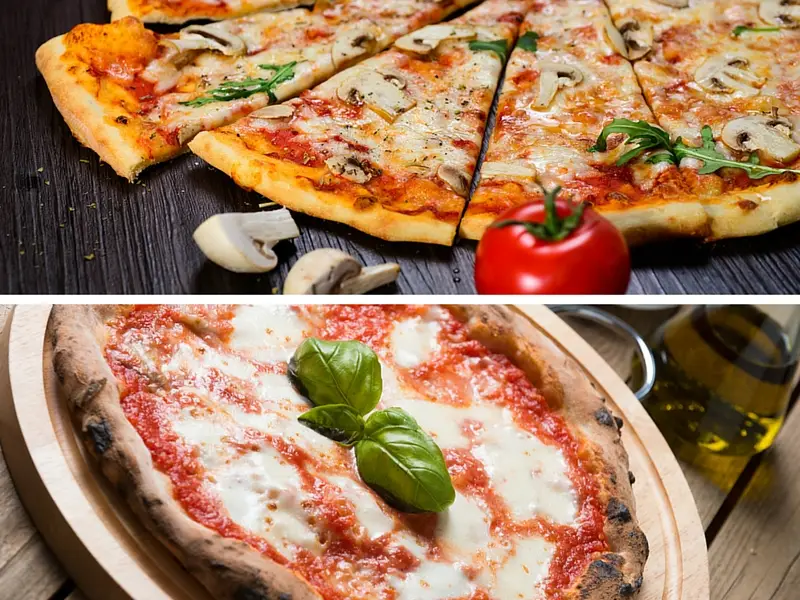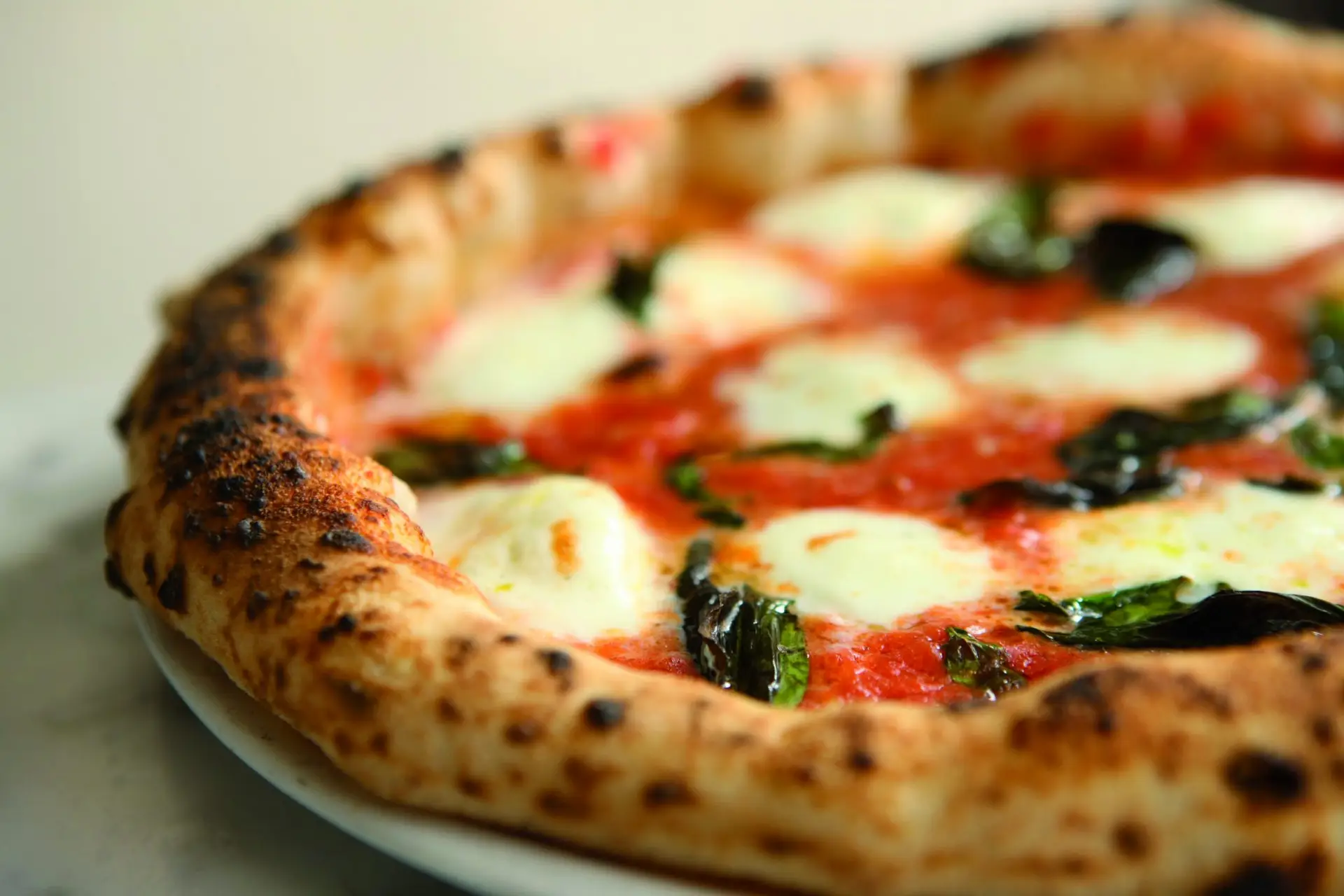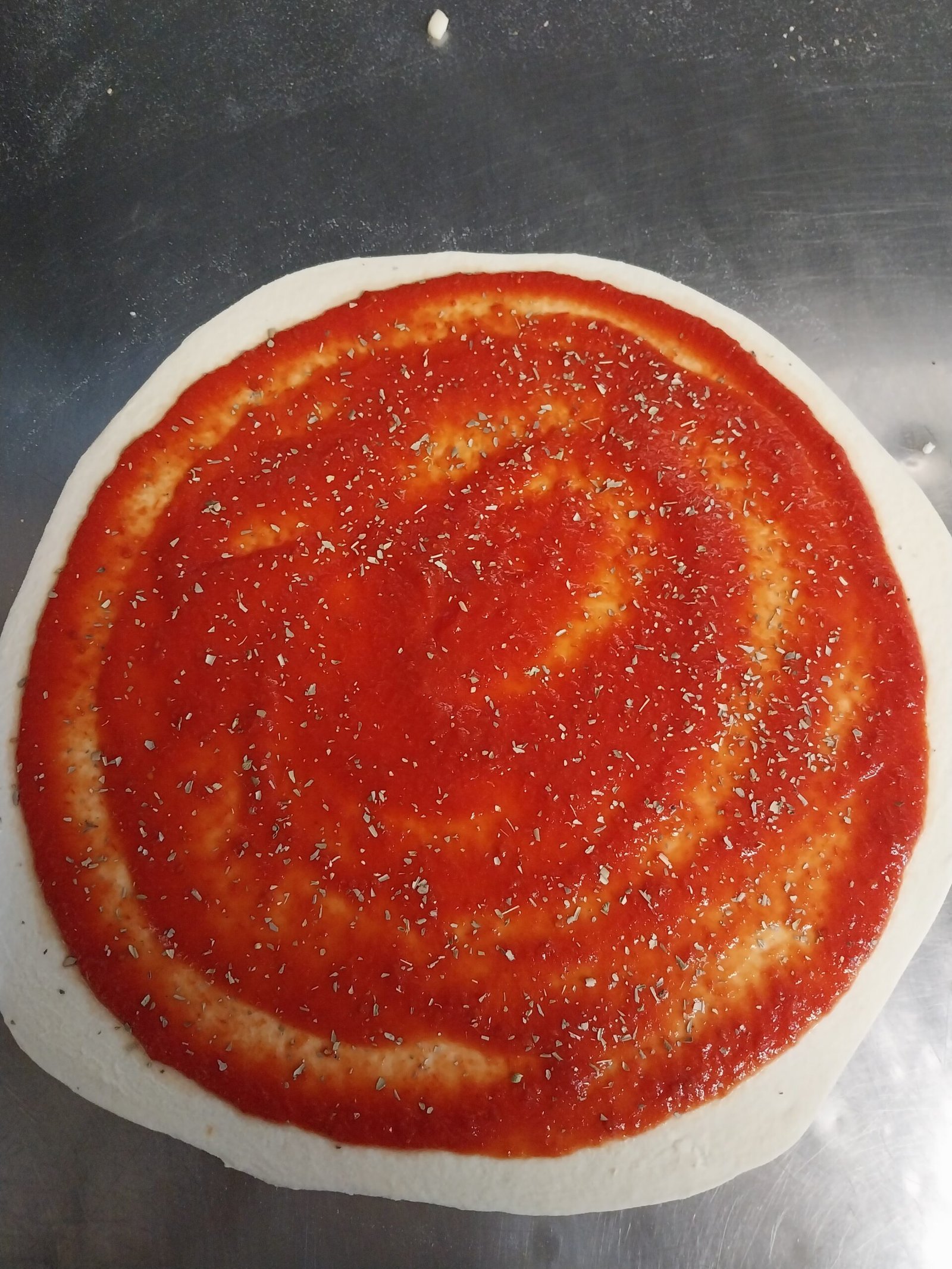
The Distinctive Flavours of Italy: Pizza Romana vs Pizza Napoletana
One of Italy’s most successful food exports is pizza; it is available in many regional specialties, each possessing features to a certain extent. There are two most popular versions of pizza: two traditional Italian pizza preparations which are Pizza Romana and Pizza Napoletana. Since agrees to the fact that both have all the basic qualities of making pizza, which is the dough, followed by sauce and cheese, then the difference in the recipes, must use traditional cooking procedures from Rome and Naples respectively. Below are elaborations of points that define them in closer specification.
Pizza Romana: The Roman Delight
Crust and Texture: Pizza Romana is my favorite one, they have a very thin and crunch crust. It is usually as thin as the Neapolitan but the dough is crisp and can even be burnt at the base. They are not as puffy as they are designed to be or as light, but there is always a good grainy sound each time one bites. This crispiness is due to high hydration dough and at times even olive oil is added into the dough.
Ingredients and Toppings: Pizza Romana is usually topped with more varieties of ingredients in comparison with those used to prepare Pizza Napoletana and in most cases, there are many of them. Some toppings are basic such as Margherita in its normal tomatoes, cheese, and basil but since Romans are hearty people, they prefer more toppings such as Anchovies, capers, artichokes, and even pork meats such as prosciutto and sausages. These variations are some of the following: Pizza Bianca which is a white pizza that has no tomatoes at all. instead, it is prepared with olive oil and decorated with rosemary and sea salt. It is also possible to state another favorite of many Pizza Capricciosa with mushrooms, artichokes, ham, and eggs and also olive.
Baking Method: Initially, Pizza Romana has to be baked in an electric oven, or in a wood-fired oven with an even slightly lower temperature than used in the preparation of Pizza Napoletana, which ranges between 500 to 600 F (250-300C). It also contributes to the quality of taste and touch of the food and guarantees that the base of the pizza is adequately crispy.
Historical Background: Pizza Romana has evolved not from the Roman period flatbreads. For example, Romans serving as soldiers used to bake what might be referred to as “naan bread” on their shields which later evolved into thin-crust pizzas. The Roman tradition of pizza: On the one hand, the base is crispy and, on the other hand, it is covered with toppings to suit the inhabitants.
Pizza Napoletana: Thus the Neapolitan Classic derives its name from.
Crust and Texture: Pizza Napoletana has a soft feel of the crust and this makes it to be more of a chewy pizza. It is again a very lightly milled flour referred to in Italy as ‘00’, water, salt, and yeast – the dough they use also is fermented for at least 24 hours. This leads to the rather spongy dough with tall and proud ‘cornicione’ in the outer ring Though the texture of cornicione is tender both in terms of bread crumbs and slight elasticity.
Ingredients and Toppings: Pizza Napoletana has few ingredients in it and it is very suitable to procure all these from high quality. For example, the classic Margherita is made of pasta base San Marzano tomatoes, fresh mozzarella di bufala, basil, and a dig of the quality extra-virgin olive oil. These ingredients are usually accompanied by the protected designation of origin, also referred to as PDO, for Points of Origin. Another one that matches perfectly the classics is the Marinara – on the dish, there are just tomatoes, garlic, oregano, and olive oil. It emphasizes on the taste and the quality of the components as little toppings are placed to conceal their taste.
Baking Method: Pizza Napoletana is baked in coal coal-fired oven at a very high surface temperature of almost 500 preferably 900 degrees (Fahrenheit) or 480 degrees (Celsius) for only 90 seconds. This is so due to the fact that the cooking is very fast and this makes its crust to be very soft and tender with slight charring which enhances its flavor. This heat is what makes the pizza cook from both sides the crust bakes properly and gets that spotted look.
Historical Background: Pizza Napoletana is a type of pizza whose origination can be dated back to Naples in the 18th century. It was food that was readily available for the ‘lesser’ people, bought on the streets, and hawked in rendezvous. The classic Margherita pizza was allegedly created in honor of Queen Margherita of Savoy in 1889, with the toppings representing the colors of the Italian flag: and are associated with three colors: red (tomato), white (mozzarella), and green (basil). As of today, the genuine preparation of Pizza Napoletana is protected by the Associazione Verace Pizza Napoletana (AVPN) which lays rules on how it should be made.
Cultural and Regional Differences
As earlier discussed the dissimilarities between Pizza Romana and Pizza Napoletana are due to the region’s history and culture. Naples, the city in which pizza was born, pays much attention to the traditional techniques, the natural ingredients, and the plainness of the dishes. Rome on the other hand has influences of its historical background and has a preference for a texture that is even more refined.
Each style can now claim a rightful spot in the affection – and the stomachs – of millions of pizza lovers all over the globe. If you want a crust that has an extra crunch, you will love the Roman-style pizza but if you want a chewy crust then the Neapolitan-style pizza will not disappoint you.
Modern Influences and Global Popularity
In the course of globalization, both Pizza Romana and Pizza Napoletana remain paramount to current pizza preparation. Chefs all over the world tinker with the conventional methods as well as the practice, and at times they combine aspects of both styles to produce unique pizzas.
Fusion and Innovation
There are many cross-over pizzas that are found in most cosmopolitan cities that blend the Roman and Neapolitan styles of pizzerias. For example, some pizzerias prepare Neapolitan pizza dough but cook its toppings in the Roman tradition, thus the outcome is a perfect combination of both a light air dough and a combination of strong-flavored toppings. These fusions of pizzas are contemporary while following the roots and an ancient approach at that.
Artisanal and Gourmet Pizzas
The artisanal and gourmet food movement has both risen in the fashion of Pizza the Roman and Pizza the Naples and, at the same time, the situation has become higher end. Pizzerias that pride themselves on offering premium ingredients that are of the highest quality, play around with special toppings and work hard to get their dough and bake their dough right. This phenomenon has enabled us to have more respect for the meticulous processes used in the preparation of traditional pizza while at the same time, the old and new styles have been exposed to a larger crowd.
Cultural Significance
Pizza has turned out to be a symbol of Italian society and history, so much so that it is celebrated at festivals and other events that are held globally. As an example, the Napoli Pizza Village, a significant festival related to the best Pizza Napoletana attracting several thousand people, is hosted annually in Naples, with elite pizzaiolo preparing authentic Pizza. Again, in Rome, the pizzerias throw their pizza galas with Pizza Romana as the main guest. Through pizza making, we are faced with our commonality, but this art form provides us with an opportunity to create such a wide range of cultural expressions that we can explore and re-make it as a new conversation, like a good habit that gets at the interaction of humans living together.
So, the distinctive styles of Pizza Romana and Pizza Napoletana, despite the shared heritage, can provide the most different perspectives. The hard and crisp crust of Pizza Romana points in sharp contrast to the airy and light base of Pizza Napoletana. Each type has its peculiar ingredients, the way they are baked, and the distinct taste profiles that derive from the long gastronomic heritage of their regions. These nuances in the pizza experience do not just further familiarize our love of pizza, but also the different cultural bits that they are born out of.
When you are gorging on your favorite pizza bite, be mindful of the rich story and skill that goes into every single piece. The myriad of flavors that you can experience just blow me over whether or not I am in Rome, Naples, or even my favorite local pizzeria.
There is a unique taste of fun club between Pizza The Roman and Pizza The Neopolitan that can be raised by their simplicity and softness, or the crunchiness and pea-and-stuffing varieties which are products of their creativity. What is more, every single taste of a slice gives a historical view of the many foods Italy has. Enjoying pizza is not just for the satiation of one’s hunger. It is, in addition, a first-hand witness of the historical and full blood of human culture in the name of delight.

Daudul Islam
I arrived in Italy in 2019 on a family visa. I have gained new experiences after coming to Italy. I am a professional pizza maker. I’m a resident of Italy. I can speak Italian well. I have an Italian driver’s license. I have created Diary Italia to make your way easier.





